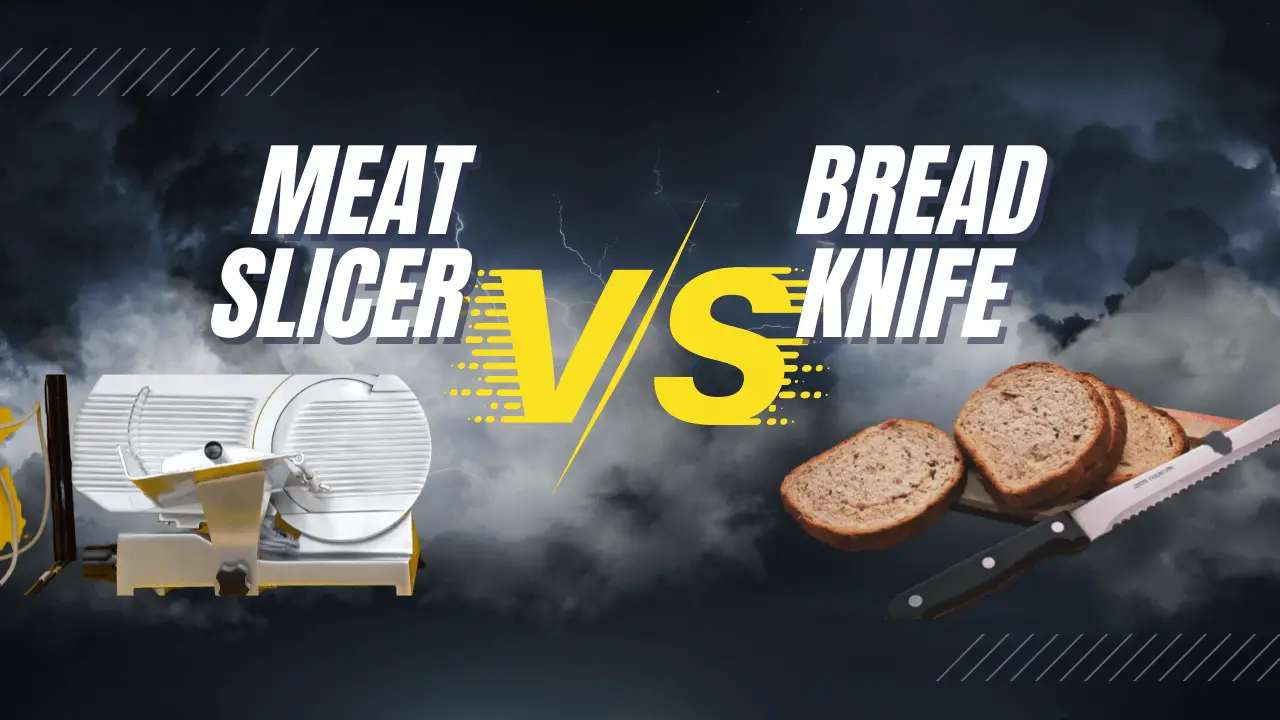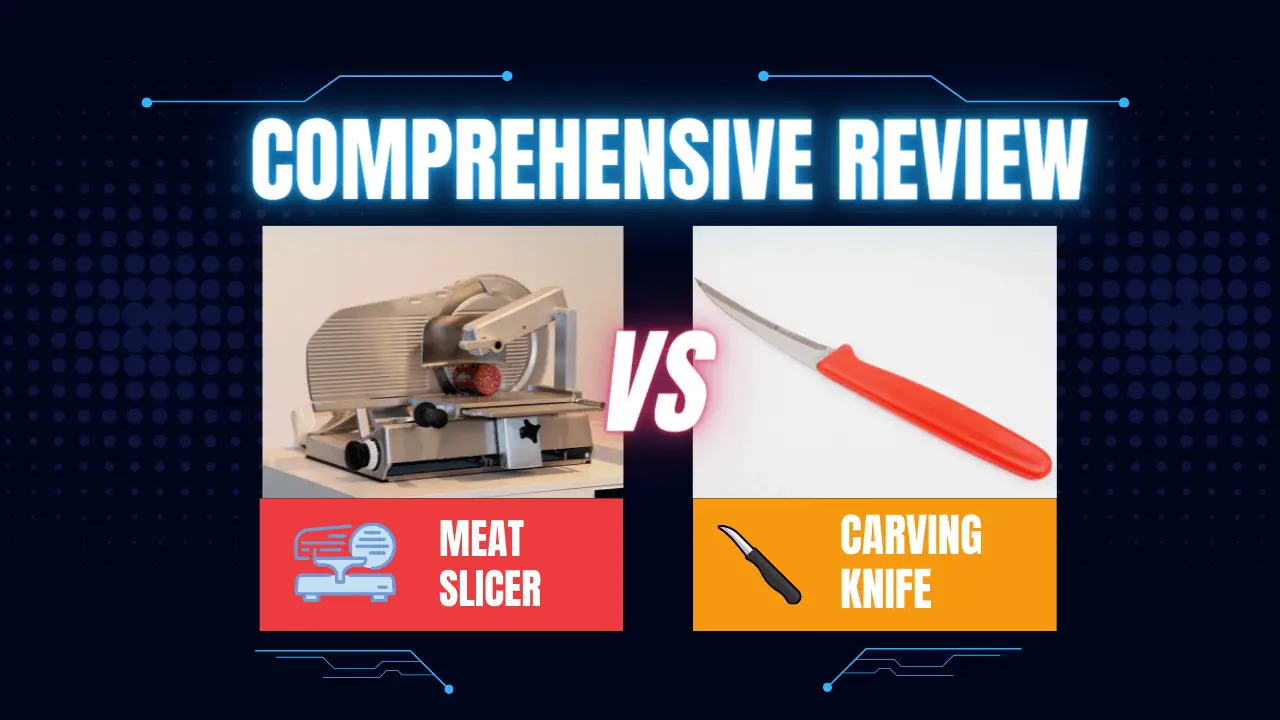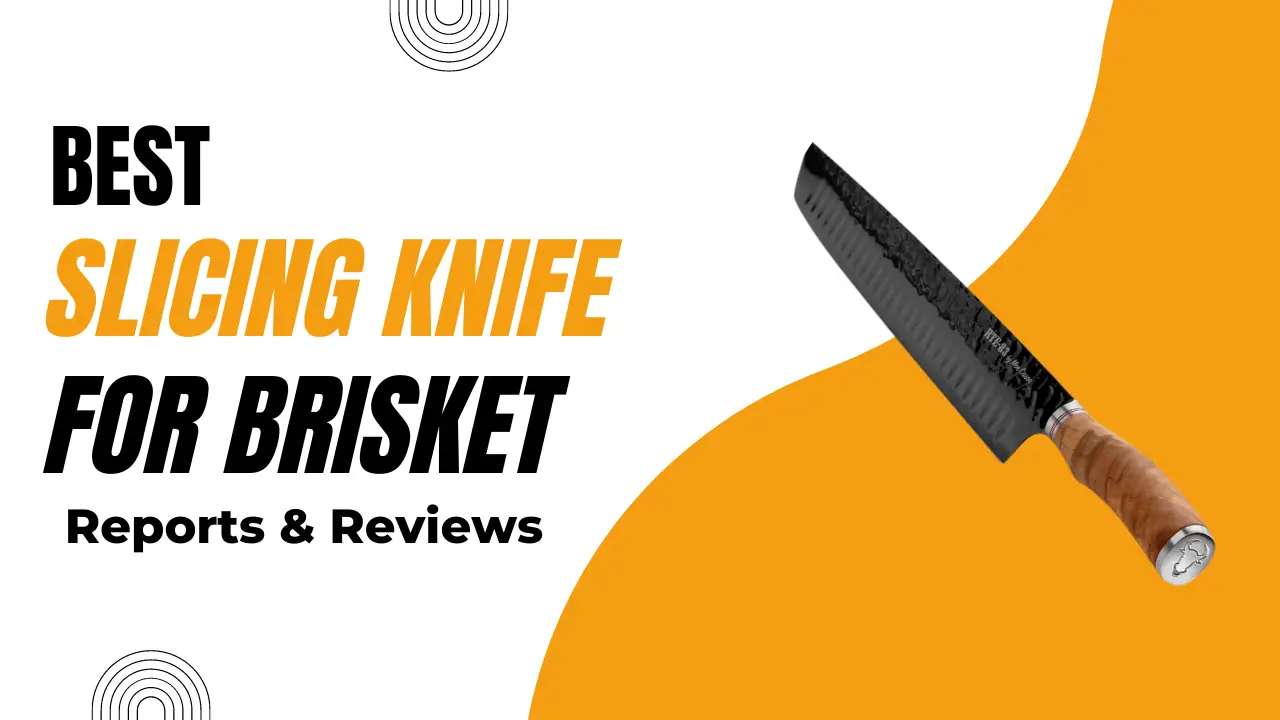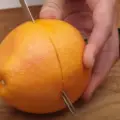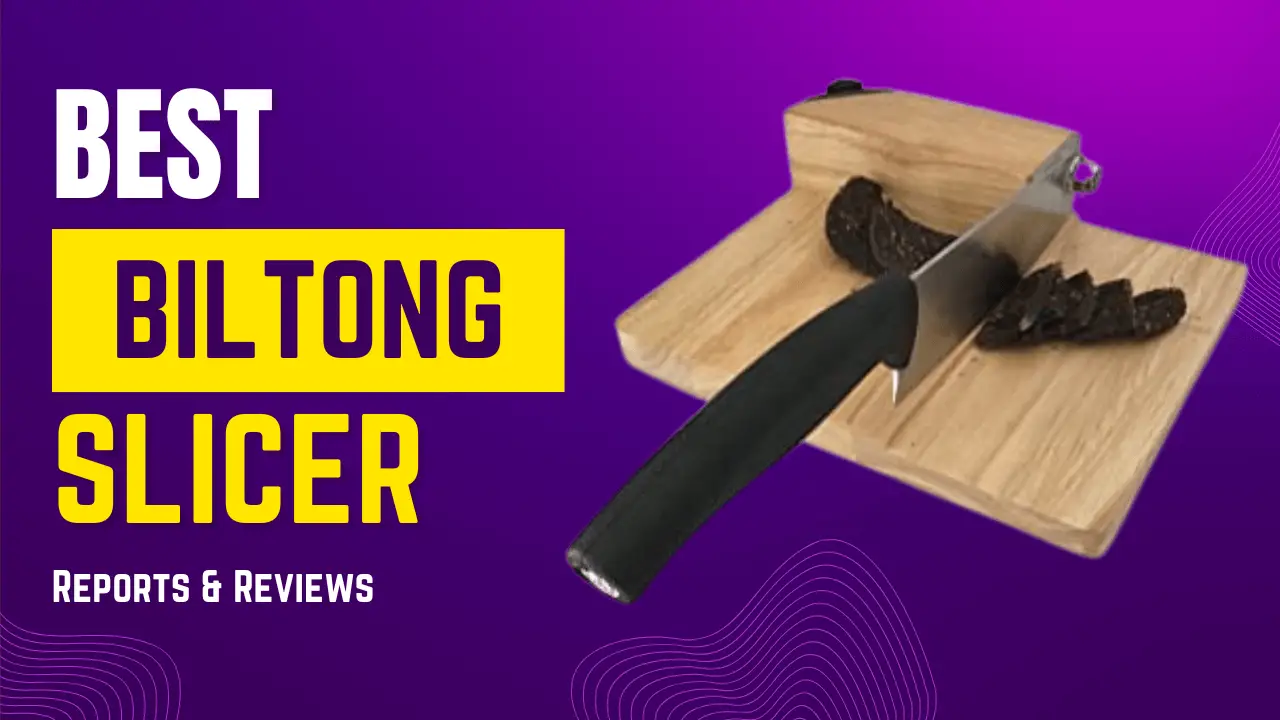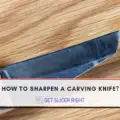Ceramic knives are a great choice for the kitchen as they are incredibly sharp and lightweight. However, because ceramic is brittle, it can chip easily and must be sharpened more frequently than other knives. You can sharpen ceremic knives with an electric knife sharpener, dimond stone or a dimond file. Sharpening ceramic blades is easy and doesn’t require expensive tools.
Can You Sharpen A Ceramic Knife?
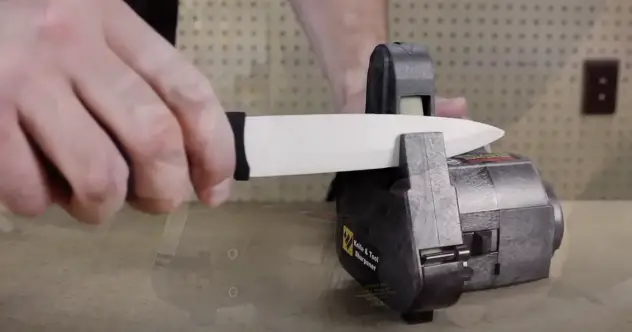
Yes, it is possible to sharpen a ceramic kitchen knife. However, sharpening a ceramic blade requires special care and attention as the material is extremely brittle and can easily be damaged or broken if not handled properly.
Why Do Ceramic Knives Need Sharpening?
Ceramic knives are made from a hard material called zirconia, which is second only to diamonds. This allows them to maintain their sharp edges longer than their steel counterparts. However, they aren’t immune to wear and tear; over time, the edges may become dull, which can negatively impact their cutting performance.
How To Sharpen Ceramic Kitchen Knives?
Method One – Electric Knife Sharpener
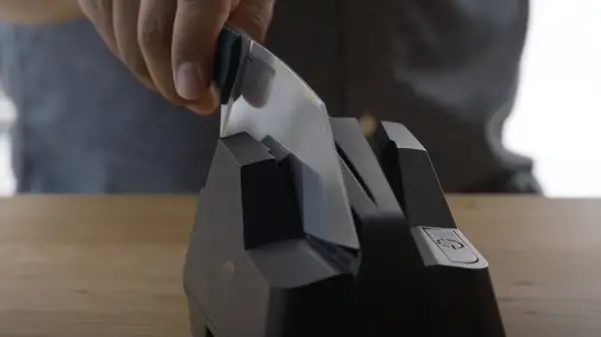
This method is best for those who want a simple and quick process. An electric knife sharpener can easily sharpen ceramic knives with the help of rotating grinding wheels.
Step 1. Make sure to use an electric knife sharpener specifically designed for ceramic knives, as other tools or methods can cause damage to the blade.
Step 2. Turn on the sharpener to a light setting before starting.
Step 3. Press gently with the knife in the sharpener at a 10-15 degree angle.
Step 4. Sharpen only one side of the blade and stop for a few seconds when you hear a beep or the knife passes through the sharpener.
Step 5. Test on a soft item, such as tomato skin, to check if it cuts cleanly before switching to another side of the blade.
Step 6. If not satisfied with the sharpness or the edge, repeat steps 3-5.
Step 7. When finished, turn off the sharpener and clean the blade with a damp cloth to remove any dust particles before storing it safely in a kitchen drawer.
Method Two – Using A Diamond Stone[/su_heading]
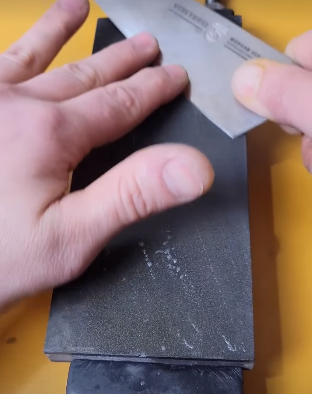
Step 1. Start with a coarse diamond stone (400 or 600 grit) to sharpen your ceramic knives. You must select the correct grit for the job–if it is too coarse, it will damage the blade and if it is too fine, it won’t be effective at sharpening.
Step 2. Place the stone on a flat surface and wet it with water before you begin. Ensure your hands are dry, as moisture can interfere with sharpening.
Step 3. Hold the knife at an angle of 20 degrees to the stone and begin moving it back and forth in a circular motion, maintaining the angle throughout the process.
Step 4. After a few passes, stop and check to see if you’ve achieved a sharp edge. If not, repeat the process until it is sharpened to your satisfaction.
Step 5. When the blade is sufficiently sharp, use a finer diamond stone (800 or 1000 grit) to smooth out any rough edges or burrs that may have been created.
Step 6. Finish the sharpening process by wiping any water or oil residue on the blade with a soft cloth.
Method Three-Using A Diamond File
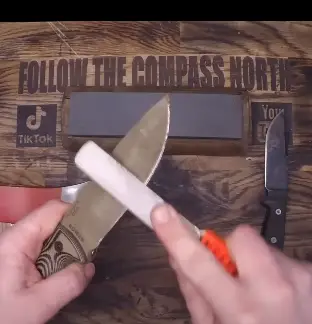
Step 1: Start by firmly holding the handle of your ceramic knife in one hand and the diamond file in the other.
Step 2: Run the diamond file along the length of each side of the blade several times. You should do this at a 45-degree angle to remove an equal amount from both sides.
Step 3: Use light pressure and keep the diamond file consistent along one line to avoid uneven sharpening.
Step 4: Once you’ve done this for a few minutes on each side, check your progress by gently running your finger over the blade’s edge. If you can feel a smooth surface, then it means that you have achieved the desired sharpness.
Step 5: If not, repeat the process for a few more minutes before checking.
Step 6: When finished, thoroughly wash and dry your knife to remove any residue from the filing process.
Alternative Method – Take It To A Professional
The other option for sharpening your ceramic knives is to take them to a professional. A professional can use their expertise and special tools to sharpen the knife blade more accurately and safely than you can at home. They may even be able to provide additional services such as honing, polishing, and balancing the knife. This method is the most reliable but can also be the costliest.
Whichever method you choose for sharpening your ceramic knife, make sure that you take all necessary safety precautions. This type of knife should always be handled carefully and cautiously, so pay close attention to what you’re doing and follow all instructions.
How To Identify Dull Ceramic Kitchen Knives?
- If your knife is not cutting through food as it used to, it could be a sign that it is becoming dull.
- Another telltale sign of a dull kitchen knife is difficulty slicing through products such as fruits and vegetables.
- Another flag for when it might be time to sharpen ceramic kitchen knives is when they feel like scraping and pulling away the food rather than slicing it.
- If you notice that your knife is taking longer to complete cutting tasks, it may be time to sharpen it as well.
- If you can see nicks or chips in the blade of your ceramic kitchen knife, it needs sharpening.
Uses Of Ceramic Knives
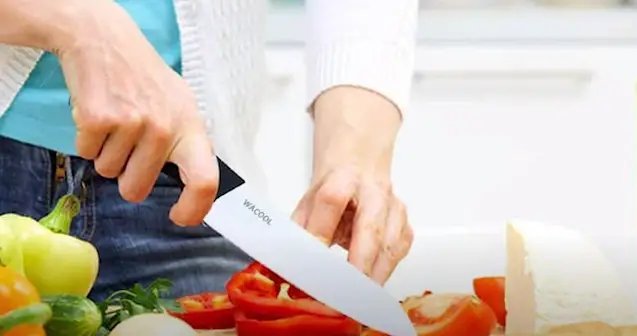
- Ceramic knives are a great choice for many kitchen tasks. They are lightweight and easy to use, making them ideal for slicing vegetables, fruits, herbs, boneless meats, and cheese. Ceramic knives hold their edge longer than traditional steel blades and won’t discolor or corrode with acidic foods like tomatoes. The extremely hard surface of ceramic knives can easily handle the tough tasks of cutting through a butternut squash or carving a turkey. Moreover, their non-porous blades are highly resistant to bacteria and germs, making them ideal for everyday use in busy households.
- Ceramic knives also make great slicing tools for garnishes, such as paper-thin slices of garlic or onions. Their sharpness and precision make them ideal for tasks like this, where a precise cut is needed. Ceramic knives are also perfect for shaping vegetables into intricate designs to serve as garnishes or decorate a plate.
- Ceramic knives are becoming increasingly popular with professional chefs, who appreciate their lightweight feel and unparalleled sharpness. They are also becoming increasingly popular with home cooks who want to outfit their kitchens with the best tools available.
Advantages Of Using A Ceramic Knife
- Ceramic knives are extremely hard and durable; they will not wear out or chip easily.
- They do not react with food, making them ideal for keeping flavors intact when slicing or chopping vegetables.
- They keep their sharp edge longer than traditional steel blades and require less sharpening.
- They are lightweight, easy to handle, and ideal for repetitive kitchen tasks.
Safety Precautions
Sharpening ceramic knives requires care and attention to avoid accidents. Here are some safety tips to keep in mind:
- Always work on a stable and slip-resistant surface.
- Hold the knife securely and maintain a firm grip throughout the process.
- Keep your fingers away from the blade’s edge while sharpening.
- Wear cut-resistant gloves for added protection.
- Clean the knife and sharpen the tools thoroughly after use.
Maintaining Your Ceramic Knives
Proper maintenance can prolong the sharpness of your ceramic knives and reduce the frequency of sharpening. Here are some tips for keeping your knives in top shape:
- Store your knives in a knife block or protective sheath to prevent contact with other utensils.
- Use a cutting board made of wood or plastic, as harder surfaces can dull the knife’s edge.
- Avoid using ceramic knives to cut bones, frozen food, or other hard materials.
- Wash your knives by hand and dry them immediately to prevent staining and prolong their lifespan.
FAQs
How often should I sharpen my ceramic knives?
The frequency of sharpening depends on your knife usage and cutting habits. Generally, ceramic knives require sharpening every 6-12 months.
What should I do if my ceramic knife has a chip in the blade?
If your ceramic knife has a chip, it may require professional repair or replacement. Small chips can sometimes be fixed by sharpening the knife using a diamond sharpening stone, but larger chips might be beyond repair.
Is ceramic knife breakable?
Ceramic kitchen knives are made of extremely hard materials but can break if not properly used. While ceramic blades are known for their durability and sharpness, they should still be handled carefully. Avoid using the knife to cut frozen food or other items that may damage the blade. Additionally, ceramic blades should not be used for chopping through bones or other hard materials, as they can chip and break if too much pressure is applied.
Are ceramic knives expensive?
Ceramic kitchen knives can be more expensive than their metal counterparts, but they are far from the most costly kitchen knives on the market. In contrast, a good quality ceramic knife may cost under $20. it will last significantly longer than stainless steel or other types of blades.
Are ceramic knives lighter than other knives?
Ceramic knives are sharper and lighter than their steel counterparts. The ultra-hard ceramic blades are extremely sharp and don’t transfer food odors, making them perfect for slicing delicate foods like fish, fruits, and vegetables. They also hold an edge longer than other knives because the blade does not oxidize or rust when exposed to air.
Conclusion
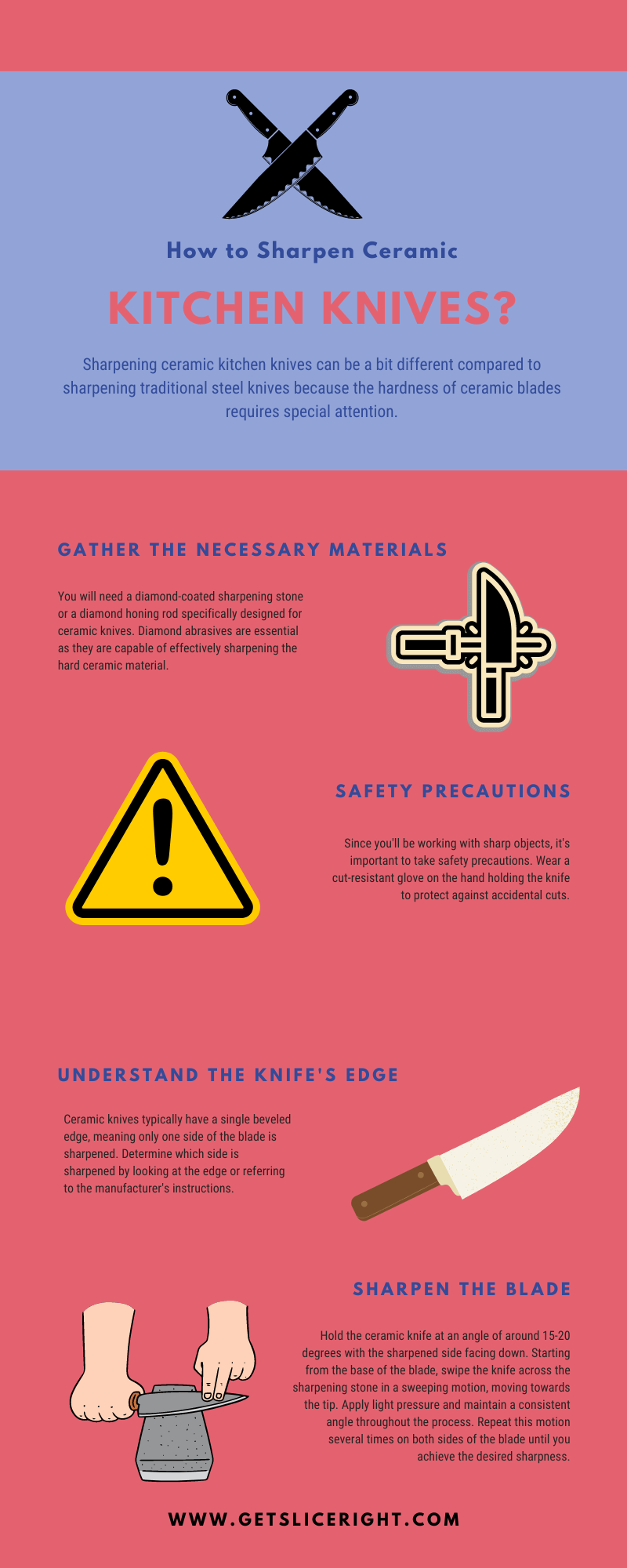
With proper care and maintenance, ceramic knives can remain sharp and efficient for a long time. Sharpening your knives when needed, using the right tools and techniques, will ensure you get the best performance from your ceramic kitchen knives.

Mario Batali is a renowned author, food enthusiast, and passionate chef who has dedicated his life to exploring the world of culinary arts. With a love for sharing his knowledge and experiences, Mario has become a prominent figure in the food blogging community, inspiring countless readers with his creativity and expertise.
In addition to his culinary prowess, Mario Batali is also a talented writer with a flair for engaging storytelling. He launched his own food blog to share his recipes, cooking tips, and personal experiences in the kitchen. Over time, Mario’s blog gained a loyal following of food enthusiasts who appreciate his unique approach to cooking and his dedication to using only the finest ingredients.
Mario Batali’s passion for food and his commitment to sharing his knowledge with others have made him a true inspiration in the world of culinary arts. Through his blog, cookbooks, and public appearances, Mario continues to spread his love of food and the joy of cooking with his ever-growing fanbase.

